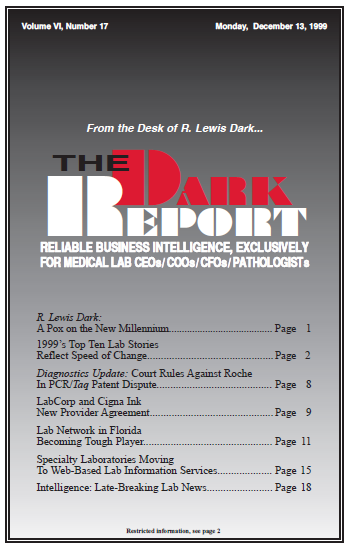CEO SUMMARY: This year’s round-up of the lab industry’s Top Ten most important stories lacks any compelling single theme. THE DARK REPORT’s conclusion? 1999 was a transition year. No new outside forces rattled the lab industry, allowing lab executives and pathologists to concentrate on implementing their particular laboratory’s business plan. However, early hints at transformational …
1999’s Top Ten Stories Reflect Speed of Change Read More »
To access this post, you must purchase The Dark Report.


